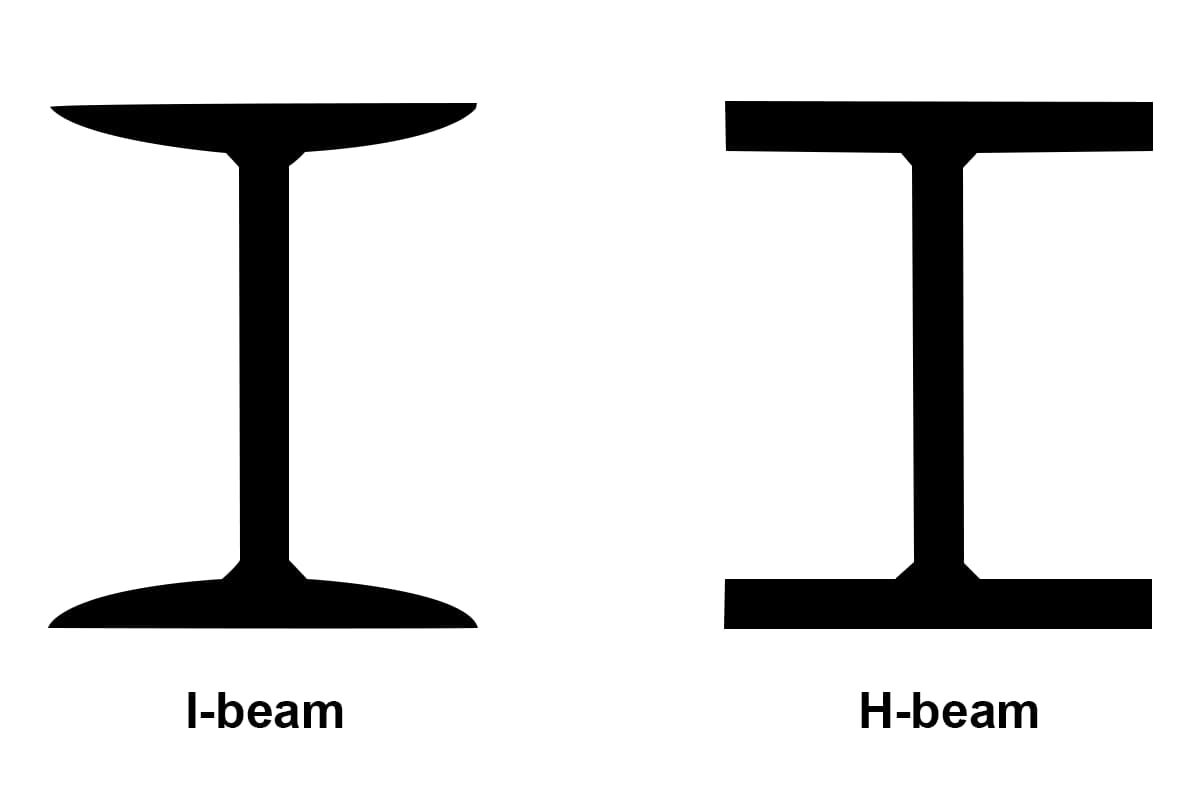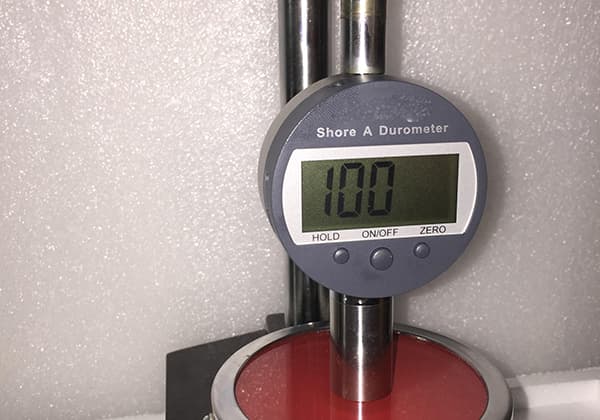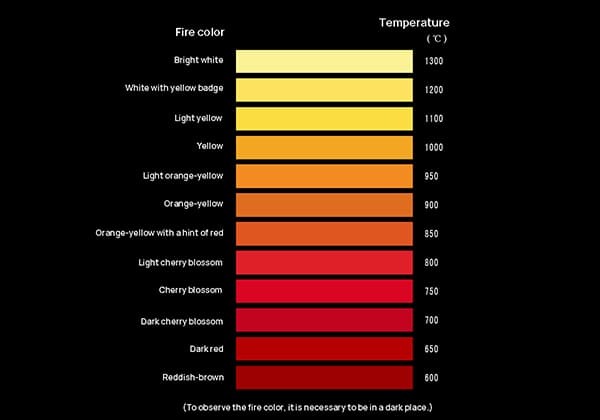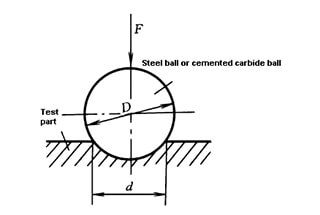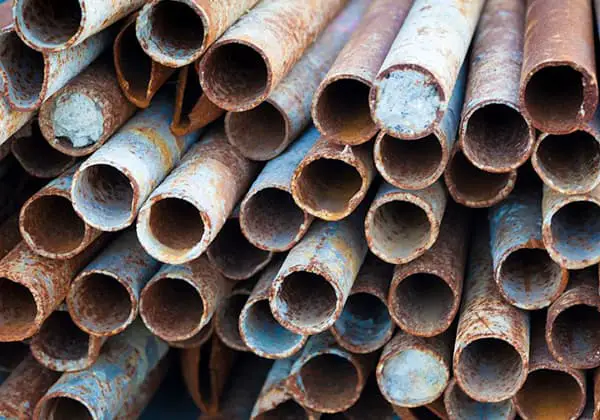
Why is tungsten vital in so many industries? This remarkable metal, with its extreme hardness and high melting point, is used in everything from lightbulb filaments to rocket nozzles. In this article, we explore tungsten’s unique properties and its various applications, from enhancing steel strength to creating superalloys. Learn how this metal’s exceptional characteristics make it indispensable in modern technology and industry.
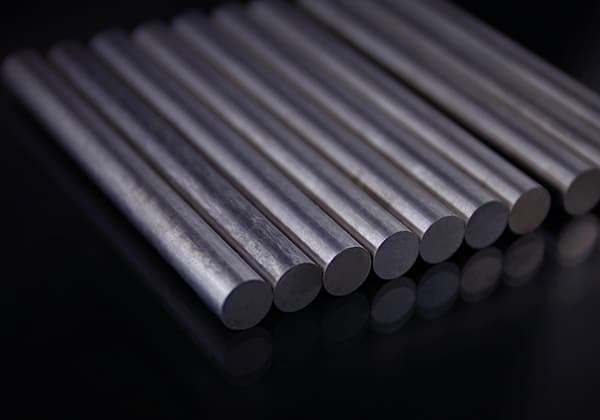
Tungsten has a melting point of 3410°C and a boiling point of about 5900°C. Its thermal conductivity is 174 w/m·K at 10-100°C, and it has a slow evaporation rate at high temperatures with very low thermal expansion coefficient.
The coefficient of expansion is 4.5×10-6·K-1 between 0-100°C.
Tungsten’s electrical resistivity is approximately three times greater than that of copper, with a value of 10-8 ohm/m at 20°C.
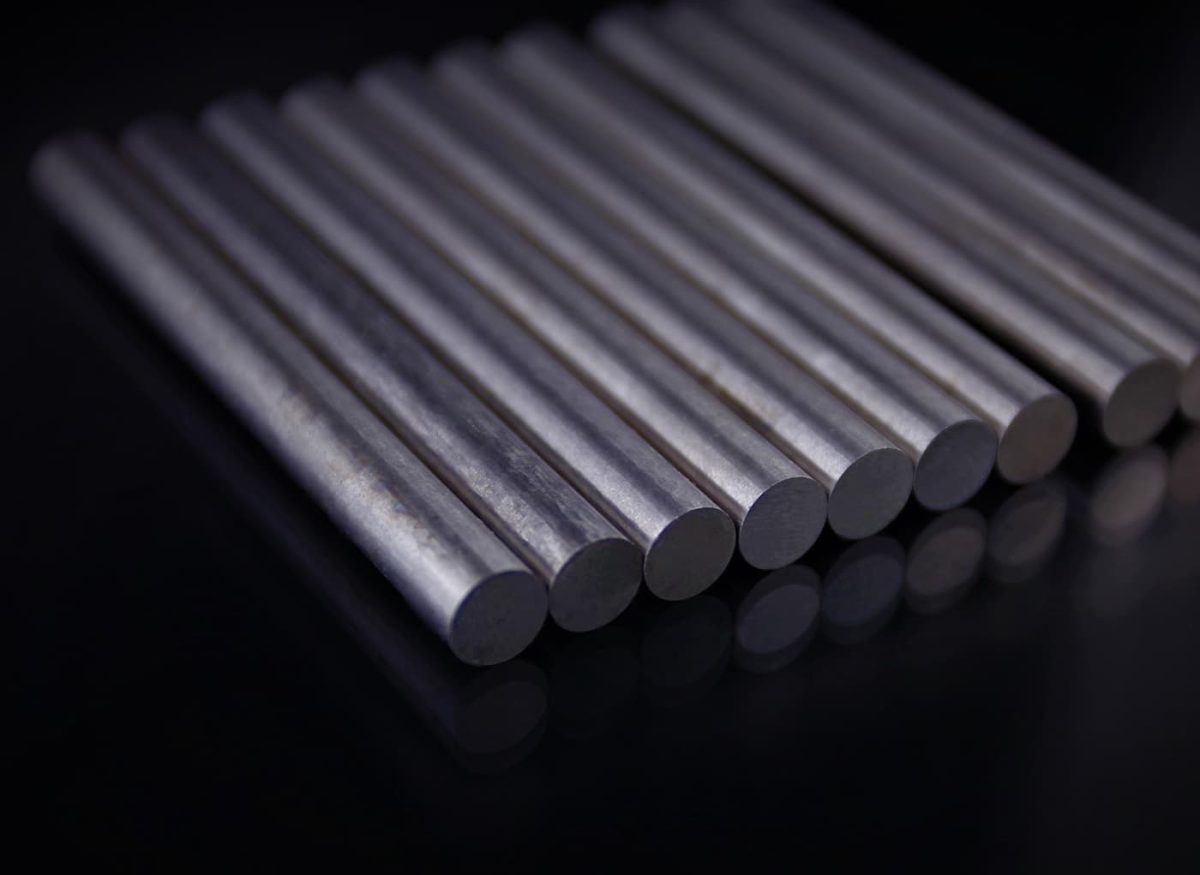
Tungsten is characterized by its high hardness, high density (density of 19.25 g/cm3), good high-temperature strength, and excellent electron emission properties.
The mechanical properties of tungsten mainly depend on its processing state and heat treatment process. Tungsten cannot be processed under pressure in a cold state.
Forging, rolling, and drawing must be done in a hot state.
Tungsten has good plasticity, and a 1 kg tungsten rod can be drawn into a thin wire with a diameter of only 1% mm and a length of about 400 km.
This fine wire still has some strength even in a high-temperature environment of 3000°C, has a high luminous efficiency, and a long service life, making it an excellent material for manufacturing various lamp filaments.
Tungsten wire is used to manufacture incandescent lamps, iodine tungsten lamps, and even the latest bulbs and tubes around the world.
At room temperature, tungsten is stable in air. At 400-500°C, it starts to undergo oxidation and forms a dense surface protective film of blue-black W03.
Tungsten is not easily corroded by acids, alkalis, and aqua regia at room temperature, but it is soluble in a mixed solution of hydrofluoric acid and aqua regia.
80% of tungsten mined worldwide is used for smelting high-quality steel, 15% is used to produce hard steel, and the remaining 5% is used for other purposes.
Tungsten can be used to manufacture firearms, rocket nozzles, and metal cutting tools, making it a versatile metal.
Tungsten is an important alloying element in steel, which improves its strength, hardness, and wear resistance.
The main types of tungsten steel are high-speed tool steel, hot work die steel, series tools and die steel, military weapons, turbine steel, magnetic steel, etc.
Tools made of tungsten steel are several times or even tens of times stronger than those made of ordinary steel.
When tungsten steel is used to make gun barrels or cylinders, it can maintain good elasticity and mechanical strength even if the barrel is heated by friction from continuous firing.
On metal cutting machines, tungsten steel cutting tools retain their hardness even at temperatures as high as 1000°C.
Spraying or welding tungsten-chromium-cobalt alloy steel with 3%-15% tungsten onto the surface of ordinary steel parts is like giving them a hard “armor.
They can withstand high temperatures and pressures, resist corrosion, reduce wear, and have a lifespan several times longer.
Due to the excellent properties and wide range of applications of tungsten steel, 90% of the tungsten produced worldwide is used to manufacture it.
Widely used high-speed steel contains 9%-24% tungsten, 3.8%-4.6% chromium, 1%-5% vanadium, 4%-7% cobalt, and 0.7%-1.5% carbon.
The characteristic of high-speed steel is that it can self-quench at high tempering temperatures (700-800°C) in the air, so it maintains high hardness and wear resistance until 600-650°C.
Tungsten steel in alloy tool steel contains 0.8%-1.2% tungsten; chromium-tungsten-silicon steel contains 2%-2.7% tungsten; chromium-tungsten steel contains 2%-9% tungsten; and chromium-tungsten-manganese steel contains 0.5%-1.6% tungsten.
Tungsten steel is used to make various tools such as drill bits, milling cutters, wire drawing dies, male and female molds, gas-supported tools, and other parts.
Tungsten magnetic steel is permanent magnet steel containing 5.2%-6.2% tungsten, 0.68%-0.78% carbon, and 0.3%-0.5% chromium.
Tungsten-cobalt magnetic steel is a hard magnetic material containing 11.5%-14.5% tungsten, 5.5%-6.5% molybdenum, and 11.5%-12.5% cobalt.
They have high magnetization strength and coercive force.
Tungsten is the main alloying element in high-speed tool steel, alloy structural steel, spring steel, heat-resistant steel, and stainless steel.
Tungsten can be alloyed by solid solution strengthening, precipitation strengthening, and dispersion strengthening to improve its high-temperature strength and plasticity.
Through alloying, tungsten has formed a variety of non-ferrous metal alloys that have a significant impact on contemporary human civilization.
Adding rhenium (3%-26%) to tungsten can significantly improve its ductility and recrystallization temperature.
After appropriate high-temperature annealing treatment, some tungsten-rhenium alloys can achieve an elongation of up to 5%, much higher than the 1%-3% for pure or doped tungsten.
Tungsten-thorium alloys formed by adding 0.4%-4.2% thorium oxide (ThO2) to tungsten have high thermal electron emission ability and can be used as hot cathodes for electronic tubes, argon arc welding electrodes, etc.
However, the radioactivity of ThO2 has not been resolved for a long time. Cerium-tungsten (W-CeO2) alloys developed in China, and lanthanum tungsten and yttrium tungsten alloys made by using La2O3 and Y2O3 as dispersants (oxide content generally below 2.2%) have been widely used as high-temperature electrodes for argon arc welding, plasma welding and cutting, non-self-consumable arc furnaces, etc., replacing W-ThO2 alloys.
Tungsten-copper and tungsten-silver alloys are a type of powder metallurgical composite material composed of elements that do not react with each other and do not form new phases.
Tungsten-silver and tungsten-copper alloys are not actually alloys and are therefore considered pseudo-alloys.
Tungsten-silver alloys, commonly known as infiltration silver tungsten, contain 20%-70% copper or silver and have excellent electrical and thermal conductivity properties of copper and silver and the high melting point and corrosion resistance properties of tungsten.
They are mainly used in rocket nozzles, electrical contacts, and semiconductor support components.
The nozzle of a North Star A-3 missile is made of tungsten infiltrated with 10%-15% silver, and the rocket nozzle used in the Apollo spacecraft weighing several hundred kilograms is also made of tungsten.
Tungsten-molybdenum alloys have higher electrical resistivity and better toughness than pure tungsten, and have been used as filaments in electronic tubes and glass sealing lead-out wires.
Tungsten, as an alloying element, is also mentioned in non-ferrous metal alloys such as superalloys. In the 1940s, to meet the high-temperature material requirements of aviation turbojet engines, superalloys were born in the roaring gunfire.
Superalloys are composed of three types of special structural alloys: nickel-based, cobalt-based, and iron-based.
They can still maintain extremely high strength, creep resistance, oxidation resistance, and corrosion resistance at high temperatures (500-1050°C).
In addition, they can ensure no fracture during the long-term service life of several years, that is, they have the characteristics of high-cycle fatigue and low-cycle fatigue resistance. Such performance is crucial for the aerospace industry, which concerns human lives.
Tungsten is an important alloying element in the steel industry, which can improve the strength, hardness, and corrosion resistance of steel.
Hard alloys (tungsten carbide) containing 60%-90% tungsten have high hardness, wear resistance, corrosion resistance, and heat resistance, and are used to manufacture drill bits, cutting tools, and high-temperature resistant parts.
Tungsten-copper (or tungsten-silver) alloys with tungsten content of 60%-90% are excellent contact materials and can be used as electrical switches, circuit breakers, and spot welding electrodes.
Tungsten-nickel-copper alloy can be used as a shielding screen for α and γ rays. In rocket engines, uncooled nozzles made of tungsten can withstand high temperature of 3127°C and high pressure and thermal stress.
It can be used as a luminescent material and X-ray cathode target in lighting and electronic industries.
It can also be used as a high-temperature resistance furnace heating element. The thermocouple composed of tungsten and tungsten-rhenium (26%) alloy can measure temperature from room temperature to 2835°C.
Tungsten diselenide can be used as a lubricant for senior lubricating bearings, with a lubrication temperature range of -217°C to 350°C. Tungsten compound pigments have bright luster and durability.
Special alloys with tungsten as the main component include:
The manufacture of high-density tungsten alloys based on tungsten has become an important application field of tungsten.
By adding nickel, iron, copper, and a small amount of other elements to tungsten powder at the same time using liquid phase sintering technology, high-density tungsten alloy can be produced.
Depending on the composition, high-density tungsten alloys can be divided into two alloy systems: tungsten-nickel-iron and tungsten-nickel-copper.
Its density can reach 17-18.6 g/cm3 through liquid-phase sintering. Liquid-phase sintering refers to the sintering process in which there is a certain amount of liquid phase at the sintering temperature when the mixed powder is pressed and formed.
Its advantage is that the liquid phase wets the solid-phase particles and dissolves a small amount of solid matter, greatly accelerating the densification and grain growth process and achieving extremely high relative density.
For example, for nickel-iron powder commonly used in liquid-phase sintering, the nickel-iron powder melts during sintering. Although the solubility of solid-state tungsten (95% by volume) in liquid-state nickel-iron is extremely low, solid-state tungsten is easy to dissolve in liquid-state nickel-iron.
Once the liquid nickel-iron wets the tungsten particles and dissolves part of the tungsten powder, the shape of the tungsten particles changes, and its internal pores disappear immediately when the liquid flows in.
The process continues, and the tungsten particles continue to coarsen and grow until they produce a final product that is nearly 100% dense and has optimal microstructure.
High-density tungsten alloy made by liquid-phase sintering not only has higher density than pure tungsten but also better impact resistance performance. Its main application is to manufacture high-penetration military armor-piercing bullets.
Heat-resistant and wear-resistant alloys, as the most refractory metal, tungsten is one of the components of many heat-resistant alloys.
For example, an alloy composed of 3-15% tungsten, 25-35% chromium, 45-65% cobalt, and 0.5-2.75% carbon is mainly used for strongly wear-resistant parts, such as valves in aviation engines, working parts of hot stamping dies, turbine impellers, excavating equipment, and surface coatings of plowshares.
In aerospace and rocket technology, as well as in other sectors requiring high thermal strength of machine parts, engines, and some instruments, tungsten and alloys with other refractory metals (tantalum, niobium, molybdenum, rhenium) are used as heat-resistant materials.
Currently, there are 35-40 well-known brands of superalloys used, many of which have tungsten as one of their main components (see table).
| Alloy | Composition(%) | ||||||||||
| Cr | Ni | Co | Mo | W | Nb | Ti | Al | Fe | C | Other | |
| Fe-Ni Base | 19.9 | 9.0 | 1.25 | 1.25 | 0.4 | 0.3 | 66.8 | 0.30 | 1.10Mn,0.6Si | ||
| Ni base Rene80 Rene95 MAR-M247 INMA-6000E | 14.0 14.0 8.25 15.0 | 60.0 61.0 59.0 68.5 | 9.5 8.0 10.0 | 4.0 3.5 0.7 2.0 | 4.0 3.5 10.0 4.0 | 3.5 | 5.0 2.5 1.0 2.5 | 3.0 3.5 5.5 4.5 | <0.3 <0.5 | 0.17 0.16 0.15 0.05 | 0.015B,0.03Zr 0.01B,0.05Zr 0.015B 1.1Y2O3,2.0Ta, 0.01B,0.15Zr |
| Co base Haynesm25 (L605) Haynesl88 S-816 X-40 WI-52 MAR-M3O2 MAR-M5O9 J-1570 | 20.0 22.0 20.0 22.0 21.0 21.5 23.5 20.0 | 10.0 22.0 20.0 10.0 10.0 28.0 | 50.0 37.0 42.0 57.5 63.5 58.0 54.5 46.0 | 4.0 | 15.0 14.5 4.0 7.5 11.0 10.0 7.0 | 4.0 | 0.2 4.0 | 3.0 3.0 Max 4.0 1.5 2.0 0.5 2.0 | 0.10 0.10 0.38 0.50 0.45 0.85 0.6 0.2 | 1.5Mn 0.90La 0.5Mn,0.5Si 2.0Nb+Ta 9.0Ta,0.005B,0.2Zr 0.5Zr | |
The tungsten content in these alloys ranges from a minimum of 0.6% to a maximum of 15%, and although it does not take up a large proportion, the demand for them in high-temperature engineering applications such as the aerospace industry and thermal power plants is significant.
It is estimated that globally, over two-thirds of superalloys are used in the aerospace industry, with one-seventh used in nuclear and gas turbine power plants, and another one-seventh used in maritime operations and transportation.
Tungsten carbide-based hard alloys have high hardness, wear resistance, and refractory properties.
These alloys contain 85% to 95% tungsten carbide and 5% to 14% cobalt, which acts as a bonding agent metal, providing the necessary strength to the alloy.
They are mainly used in certain alloys for processing steel, also containing titanium, tantalum, and niobium carbides.
All of these alloys are manufactured using powder metallurgy processes. When heated to 1000-1100 ℃, they still maintain high hardness and wear resistance.
The cutting speed of hard alloy cutting tools far exceeds the cutting speed of even the best tool steel cutting tools. Hard alloys are mainly used in cutting tools, mining tools, wire drawing dies, etc.
Tungsten carbide can maintain good hardness even at temperatures above 1000 ℃, making it an ideal tool for cutting and grinding.
Tungsten powder (or W03) is mixed with carbon black and then carburized at a certain temperature in hydrogen or vacuum to produce tungsten carbide (WC).
WC is then blended with a metal bonding agent, cobalt, in a specific proportion.
After powdering, molding, sintering, and other processes, hard alloy products such as cutting tools, molds, rollers, and impact rock drilling bits are produced.
Currently used tungsten carbide-based hard alloys can be broadly divided into four categories: tungsten carbide-cobalt, tungsten carbide-titanium carbide-cobalt, tungsten carbide-titanium carbide-tantalum (niobium) carbide-cobalt, and steel-bonded hard alloys.
Of the roughly 50,000 tons of tungsten consumed globally each year, tungsten carbide-based hard alloys account for approximately 63%.
According to recent reports, the total global production of hard alloys is about 33,000 tons per year, consuming 50% to 55% of the total tungsten supply.
Tungsten and its alloys are widely used in the electronics and electric light source industries.
Tungsten filament with anti-sagging performance is used to manufacture various lighting bulbs and electronic tube filaments.
Rhenium-added doped tungsten filament is utilized to make thermocouples with a wide range of temperature measurement (0-2500 ℃), good linear relationship between temperature and thermoelectric potential, fast temperature response (3 seconds), and relatively low cost, making it an ideal thermocouple for measurements in a hydrogen atmosphere.
Taking advantage of tungsten’s high melting point without compromising its mechanical integrity, it becomes a type of thermal ion emission source for electronics, such as electron sources for scanning electron microscopes and transmission electron microscopes.
It is also used as a filament in X-ray tubes.
In X-ray tubes, electrons generated by the tungsten filament are accelerated to collide with the tungsten and tungsten-rhenium alloy anodes, emitting X-rays from the anode.
The energy of the electron beam produced by the tungsten filament must be extremely high to generate X-rays, so the surface spots struck by the electron beam are very hot.
Therefore, rotating anodes are used in most X-ray tubes. Large-sized tungsten filaments are also used as heating elements in vacuum furnaces.
In the electronics industry, especially in the manufacturing of integrated circuits, the technology of forming films on substrates using chemical vapor deposition (CVD) is a process completely different from the production of tungsten bulk materials (block materials) using powder metallurgy technology.
The most common tungsten source used in the CVD deposition process is tungsten hexafluoride (WF6).
WF6 is a liquid at room temperature, but when it flows with hydrogen gas over the part to be coated, it combines with the gas due to its extremely high vapor pressure, and selectively deposits on the surface of the workpiece at around 300°C through the reaction of WF6+3H2→W+6HF.
Tungsten vias formed by deposition on integrated circuits can be connected to another horizontal wire on the circuit board as small metal plugs.
The diameter of these small plugs is 0.4 millimeters with a length-to-diameter ratio of 2.5, and can be reduced to 0.1 millimeters in the future, achieving a length-to-diameter ratio of 5.
Due to its excellent conductivity and lack of reaction with surrounding materials, the CVD method is the only way to fill channels and purify surfaces that do not require tungsten.
Tungsten, a material used in electric vacuum lighting, is available in the form of tungsten wire, tungsten tape, and various forged components for the production of electron tubes, radio electronics, and X-ray technology.
Tungsten is the best material for making white woven filaments and spiral filaments. Its high operating temperature (2200-2500°C) ensures high luminous efficiency, while its low evaporation rate ensures long filament life.
Tungsten wire is used to make direct heated cathodes and grid electrodes for electronic oscillation tubes, cathodes for high voltage rectifiers, auxiliary cathode heaters in various electronic instruments.
Tungsten is also used as an anode and cathode for X-ray tubes and gas discharge tubes, as well as contacts for radio equipment and electrodes for atomic hydrogen welding guns.
Tungsten wire and tungsten rods are used as heater elements for high temperature furnaces (up to 3000°C). Tungsten heaters can operate in hydrogen atmospheres, inert atmospheres, or vacuums.
Other applications of tungsten include its compounds, which can be used as catalysts in the petrochemical industry, and as flame retardants, mordants, pigments, dyes, fluorescent materials, decorative paints, and solid lubricants in the textile and plastics industries.
Sodium tungstate is used to produce certain types of paints and pigments, and in the textile industry for weighting fabrics and manufacturing fireproof and waterproof fabrics by mixing with ammonium sulfate and ammonium phosphate.
It is also used in the manufacture of metallic tungsten, tungstic acid, and tungstate salts, as well as dyes, pigments, inks, electroplating, and as a catalyst. Tungstic acid is a mordant for textiles and a catalyst for producing high-octane gasoline in the chemical industry.
Tungsten disulfide is used as a solid lubricant and catalyst in organic synthesis, such as in the production of synthetic gasoline.
Tungsten-copper (10%-40% copper) and tungsten-silver alloys manufactured by powder metallurgy are excellent contact materials due to their good electrical conductivity, thermal conductivity, and wear resistance.
They are commonly used in the manufacture of working parts such as switch contacts, circuit breakers, and spot welding electrodes.
High-density alloys containing 90%-95% tungsten, 1%-6% nickel, and 1%-4% copper, as well as alloys using iron instead of copper (~5%), are used to make gyro rotors, balance weights for aircraft and control surfaces, radiation shields, and material baskets.
In summary, tungsten, whether used as an alloying element, tungsten carbide, or in its metallic or compound form, is an indispensable important material in various sectors of the national economy and cutting-edge technology, including steel, machinery, mining, petroleum, rockets, aerospace, and electronics industries.

China has the world’s largest total tungsten reserves.
The tungsten mines in Pangushan, Xihuashan, and Dajishan in Jiangxi Province are the world’s largest tungsten-producing regions.
Tungsten mines in provinces such as Hunan, Guangxi, and Guangdong also have abundant reserves.

